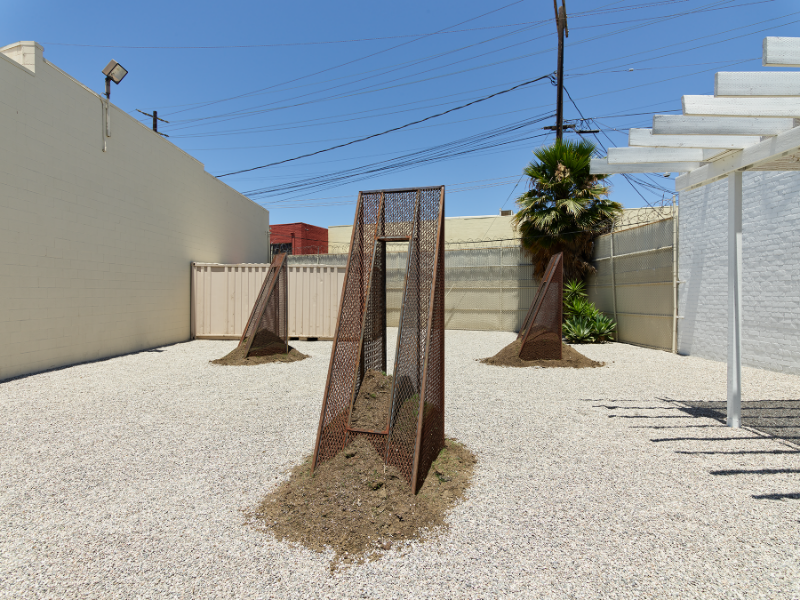“Eurydice,” Kandis Williams’ film and solo exhibition is a work that, once experienced, retains the power to alter one’s perceptions, a power that continues to linger. Both aesthetically graceful and experimental, the central part of the exhibition is a 20-minute, 2-channel video installation of poetic dissidence. It situates itself around a loose narrative—a hero’s journey of sorts—and follows a Black male performer as he traverses space and time, appearing in numerous and varied performance situations.
Projected onto two large screens that intersect at slight angles, the installation grants the viewer an immersive experience. An original musical score ties all the pieces together, emanating from the installation and playing throughout the exhibition. The haunting melodic music, combined within the vast and tenebrous gallery, transforms it into a sacred space, one that ushers the viewer into an altered state of mind.
Eurydice (2021)is a compilation of raw material which has been captured by various crew members over multiple locations: Los Angeles, St. Louis, Berlin and Montreal. Some of the footage is higher definition and more skillfully captured than others; the majority appears to have been shot in-situ on smartphones, making the final edit a collage of different angles, perspectives and circumstances. From an urban rooftop with an LA-highway backdrop to a professional theatrical production in a cathedral-like venue, our hero/performer arrives, moves and captivates. Not only are we visually consuming the performer over the course of the 20 minutes, but we are witness to his consumption by the various audiences for whom he is performing.

Season 6 (Episodes 4–6), 2021. Courtesy the artist and Night Gallery, Los Angeles. Photo by Marten Elder.
The viewer’s gaze and consumption of the Black male body can be felt viscerally and emotionally, mirroring the myth of the musician Orpheus who is allowed to liberate his dead wife Eurydice from eternity in the underworld but commanded by Hades not to look back as she follows him into the light. Yet Orpheus succumbs to the temptation of gazing at her and by breaking his vow seals Eurydice’s fate to an eternity in the underworld.
Concurrently at Night Gallery is the solo painting show and outdoor sculptural installation Root-Bound by JPW3. The paintings are installed in a separate gallery from Williams’ work but remain impacted by the music permeating throughout the gallery space. The oil pastel paintings are thick with dense mark-making in a 1970s color palette, and combine organic and geometric forms. The deep, pigmented pastel is confidently applied to wood panel, creating psychedelic landscapes of the macro and/or micro world.In the outdoor sculpture garden are JPW3’s Season 6 (Episodes 4–6), three large triangular steel prisms grounded by a mound of dirt and grass. They seem like dystopian alien portals, vanquished by time on Earth, yet incidentally becoming the seeding-bed for new life and new hope. This search for new hope is what ultimately ties together the two emotionally charged exhibitions.


